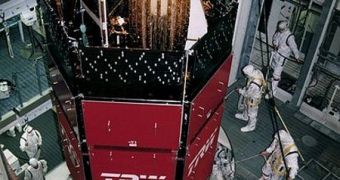Officials at the American space agency NASA announced that two of the satellites meant to be a part of the Tracking and Data Relay Satellite System (TDRSS) had successfully completed two critical reviews, and could enter production. On February 19, the TDRS K-L program completed its Critical Design Review (CDR), and Production Readiness Review (PRR) in El Segundo, California. The role of these analyses is to bridge the gap between the design and manufacturing stages of the mission, experts explain. Since they were passed with flying colors by both spacecrafts, the main contractor on the project, Boeing Space Intelligence Systems, is now getting ready to start assembling them.
The TDRSS currently features eight functioning communications satellites. Each individual component is located in a geosynchronous orbit, and is in constant communication with ground stations located in White Sands, New Mexico, and in Guam. When the two new additions, the K and L spacecrafts, will be flown to orbit, they will enhance the system's ability to provide video, and payload, health and safety data on user spacecraft launched from Earth, for up to 100 percent of their orbits.
“The K-L series of spacecraft are critical for ensuring the continued availability of high bandwidth communications necessary for the success of NASA missions, such as the International Space Station, the Hubble Space Telescope, and a host of launch vehicles,” explains TDRS Project Manager Jeff Gramling, who is based at the space agency's Goddard Space Flight Center (GSFC), in Greenbelt, Maryland. He says that a number of criteria were assessed during these two reviews, including the design of the satellites and their mission, the assembly and system integration processes, and the safety and testing requirements. The investigation was conducted by independent reviewers, alongside officials from the NASA side of the project, the program, and the agency's headquarters.
“Successfully completing these reviews is an important milestone. These new spacecraft will enable NASA to replenish aging TDRSS spacecraft and maintain the outstanding level of communications services to NASA and the nation,” says the NASA Headquarters Space Communication and Navigation (SCaN) Network Services Director, Pete Vrotsos. He adds that the TDRS coordination office is based at the GSFC, and that the communications and navigation services will be provided by the SCaN Office, at the NASA Headquarters' Operations Mission Directorate.

 14 DAY TRIAL //
14 DAY TRIAL //